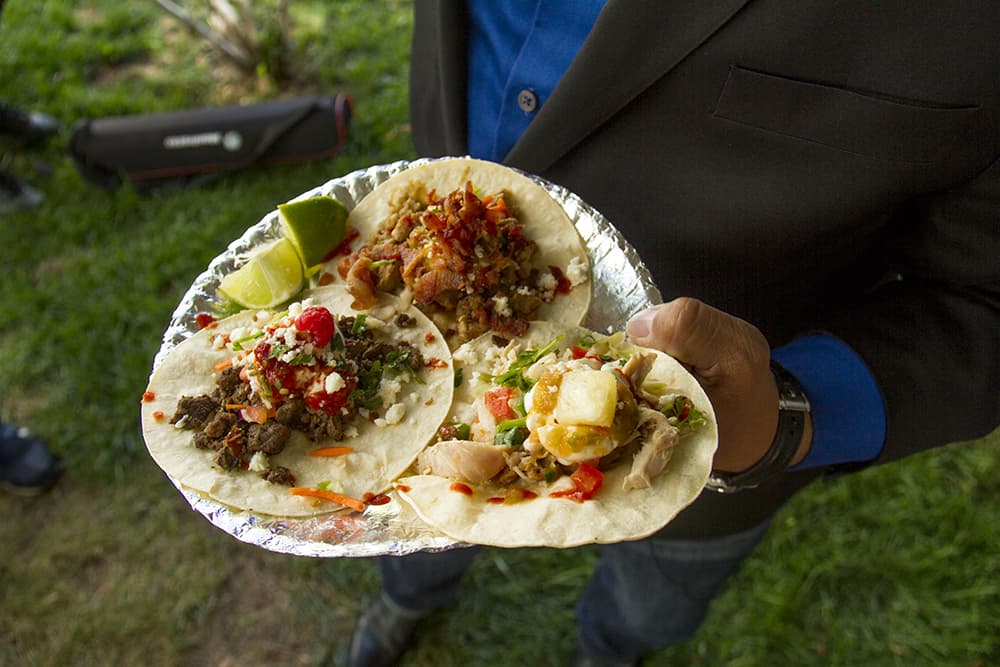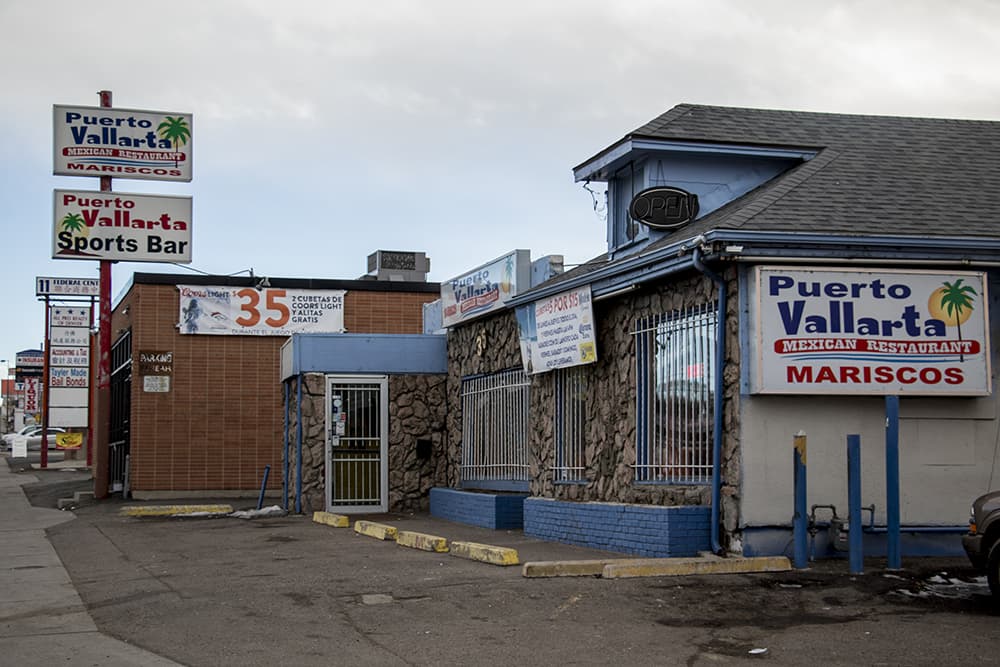
Ask anyone in Denver to evaluate a Mexican restaurant and they’ll probably tell you whether or not it’s authentic.
We've all heard the same things before: "Only hipsters pay $5 for a taco." "That place makes white girl tacos." "The only authentic places are the ones that make their own tortillas." "The only authentic places are on Federal Boulevard."
And then off you go to the restaurant your friend deems the most authentic, even though you were really craving some pickled onions on your carne asada. The authenticity card is the dinner-plan trump card.
It’s similar for Chinese and Indian restaurants, but -- perhaps due to Colorado’s love of Mexican food -- less common. Look at Yelp and you'll find that reviews of Chinese and Indian restaurants that mention authenticity also tend to offer an opinion (stated as fact) about whether the food is Americanized or compare it to their experiences with East and West Coast Chinese food.
And that’s the trend across the board: It’s all but impossible to know how anyone defines authentic food, at least in terms of flavor and technique.
What’s almost universal in conversations about authenticity, though, is that the description is applied to restaurants also described as “a hole in the wall,” or that have been in the neighborhood for a long time, or that aren’t trendy -- a tendency some experts say reflects poorly on our judgment of other cultures.

Putting aside -- for a moment -- some of the uglier implications of that mentality, it turns out chefs don’t really agree with that assessment.
"I would never want to say that this isn’t authentic just because it’s expensive," said Jorge de la Torre, dean of culinary education at Johnson & Wales University’s Denver campus.
"I think that there’s some places where you decide what is the priority of the restaurant. Is it that it’s in a spectacular location where they have to pay a lot of money for the rent? Are they looking to cast a wide net for people or are they saying, 'This is what we’re serving and we’re in a strip mall and we don’t care if you like it, this is what we’re serving'? Usually they have to be authentic because what else do they have? It’s not that they’re downtown with outdoor seating."
But restaurants like Tamayo or Comida, he said, are just as authentic. It’s just where they are that drives up the price.

Look at Que Bueno Suerte, for example. It’s got a trendy space in an upscale spot on South Pearl Street and a chef who is fond of saying “I don’t fuck around with food.”
That’s what Dana Rodriguez told the press when she opened Que Bueno Suerte late last year and that's what she said on the phone this week when I asked her what it means to be authentic.
“I think it’s a big challenge for a lot of chefs to present the culture and tradition in Mexico,” she said. “People asking why you don’t have chimichangas, why you don’t have burritos … In south Mexico, we have a lot of influences from Spain. Here in Colorado, I feel that the only thing about Mexican food is more like Tex-Mex, just tacos … I think it’s a long road to show people what the tradition is and try to change their mind about what they’re looking for.”
On the menu at Que Bueno Suerte, you’ll find a pato con mole -- maple leaf duck leg confit, mezcal infused rice, oaxacan mole and watercress -- for $24 and faisan a la pibil -- achiote-pan roasted pheasant, epazote-black bean puree, grilled cactus salad and pan sauce -- for $32. Tacos will cost you $4 each, and they’re not carne asada, carnitas or al pastor. They're made with guajillo pepper-steamed lamb neck and cheek and radish-cilantro-onion salad, or citrus marinated-fried catfish, cabbage salad and avocado-roasted garlic aioli.

“If you want a smothered burrito, you go to Taco de Mexico,” Rodriguez said. “What we’re trying to present is … the different way we do things in Mexico.”
For many Americans, though, the cheap stuff is the only real stuff. And there's been some lively conversation about this lately.
In an interview published last spring in the Washington Post, Krishnendu Ray, chair of nutrition and food studies at New York University and author of "The Ethnic Restaurateur," discussed our skewed values when it comes to “ethnic” food.
“There are what I call internal hierarchies of tastes, and there is nothing that shows this better than when you look at price, when you look at what we are willing to pay for different types of food. We are really not willing to pay for "ethnic food." It's true of Indian food, it's true of Thai food, it's true of Chinese food, and it's true of many others. They're just not good enough, in the minds of Americans anyway, to pay $30, $40 or $50 for these foods. People might say this isn't true, but it's very clear in the actions of American consumers.”
These calculations we make send the message that we value some cultures more than others, he argues -- that we think Japanese food, which we're generally willing to pay top dollar for, is more refined than, say, Chinese food.
The other big metric for authenticity in our nation of immigrants is where you come from and/or how long you’ve been somewhere. We are, for obvious reasons, far more likely to judge Chinese food as authentic when we know it’s made by someone from China, though it’s perfectly possible for someone from Brighton to master Chinese cooking techniques.
This attitude, of course, has its own problems. As Thrillist editor Kevin Alexander wrote in a piece titled "Why ‘Authentic’ Food is Bullshit": "The first reaction is to look where that person is from, and how long they've been there, and use that information as the sole basis for determining the legitimacy of the argument being advanced. It's like a trial lawyer searching for a reason to dismiss a contention, rather than countering it. Or a politician launching a personal attack to deflect a hard question."
And that doesn't just apply to whether or not the person making the food is from its region of origin. As Alexander points out, people will often evaluate a restaurant based on what they're used to in a place they've lived for a long time, with a "My family has lived in ____ since ____, and there was never ____" statement that's probably familiar to everyone in Denver right now.
The simplest way to pin down authenticity, then, is in the ingredients and technique.
De la Torre, who does not think authenticity is bullshit, said, “If you’re going to say this is an authentic dish from some region, there are some standards that you have to go by.”
“Let’s take bizcochito from Mexico. People would say an authentic one is made with lard. They think that’s the flakiest crust. And probably -- let’s say 50 years ago, maybe 100 years ago -- that was the only fat they had. It’s not a butter-rich country. They did it by rendering pork because they killed a pig and used everything from that pig.”
But times change and the way we cook changes with them. Now, using butter in place of lard is acceptable because it’s a little healthier, a little cheaper and easier to access, he said. And as people move around, bringing recipes with them, they make tweaks and adapt, creating something new that’s authentic in the context of a different time and place.
American food, as a genre, is based on this. It’s almost impossible to identify things that are purely American. Chef Sean Stengel, who specializes in updated versions of classic American fare over at The Nickel, said the truest of American foods is meat.
“In my timeline of American food, there’s that clear delineation point in the ‘50s when we had manufactured food. Before that, you would want to think romantically that it was food of necessity -- you’re trying to get across the country and scramble together anything you can. We had economic prosperity because of the abundance, that’s why people came here. The landscape that allows us to be constantly eating meat.”

The only region of America that was forced to develop flavors beyond that, he pointed out, is the South, where cattle and bison were less available. It’s what made southern food probably the most uniquely American cuisine we have.
But beyond that, it’s all influenced by our immigrant ancestors.
Ryan Taylor, executive chef at Kevin Taylor’s at the Opera House and soon-to-be executive chef at Hickory & Ash, sees American food as… well, the cliched way to put it would be “a melting pot.”
“My biggest thing would be that we’re taking influences from all of these great cultures and cuisines and almost kind of forming a fusion, if you will, and bringing certain flavors and ingredients and cooking techniques and bringing them into one,” he said.
The way de la Torre sees it, this just creates new standards and guidelines for authenticity. It makes it more regional and global at the same time.

“Tex-Mex or Colorado-Mex or New Mexican food can be equally authentic,” he said. “I’m from New Mexico and when I came up here I was like, ‘What is this? This is not green chile.’ But people who are from here, this is what they were raised with and they love it. To me, a chile relleno in New Mexico is like a poblano that’s been dipped in egg batter and fried on a grill. Over here, it’s like wrapped in a egg wrapper and dipped in Velveeta cheese. I can appreciate that … but it’s not what I grew up with. I think they’re all viable. It’s what people grow up on and miss while they’re away.”
“It’s always compared to what their -- for lack of a better word -- what mom used to make or what they used to be able to get,” he added.
And that’s where we really get to the heart of this thing, almost literally.
Every chef interviewed for this story touched on authenticity as something closer to a feeling than a fact. Taylor put it like this:
“Authenticity is a personal experience … It being so emotional and telling a story, I think that might be the most authentic thing, kind of cooking from the heart. Whatever type of cuisine or influences you have -- I think that’s the most authentic way to cook food. For me, I think food can be so emotional. Some people may not see it that way. You have something and you eat it and it reminds you of a time when you were back at your grandma’s house.”
Stengel also referenced grandma’s cooking: “You have your French grandmother and you went to go visit her and she made that ratatouille … If she came here and made that here, you already lost that. Authenticity is a moment more than a recipe, it cannot be documented. It’s an emotion.”
Or as Rodriguez put it, “It tastes like home. It tastes like the way it should be done … People want the tradition, they want to remember where they grow up.”
Authenticity might not be bullshit, but it's not what we often think it is and it's bafflingly as subjective as it is objective. It's a set of standards subject to change under the forces of modernization and globalization, but it's also an emotional response.
That's not the most useful definition of authenticity. It’s not going to win the argument over where to eat tonight or help you become an expert on Indian food. But it will probably make your mom happy.












